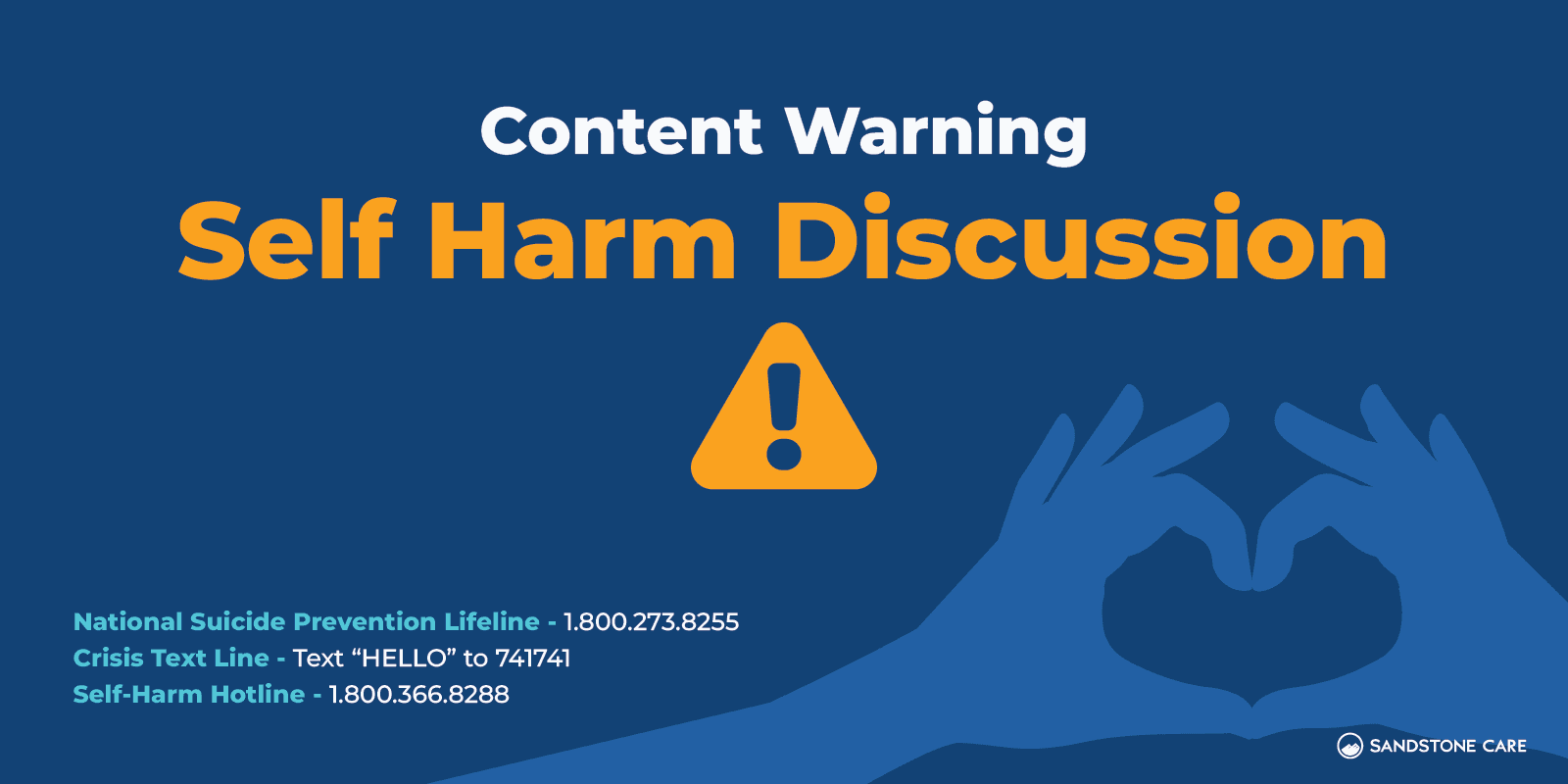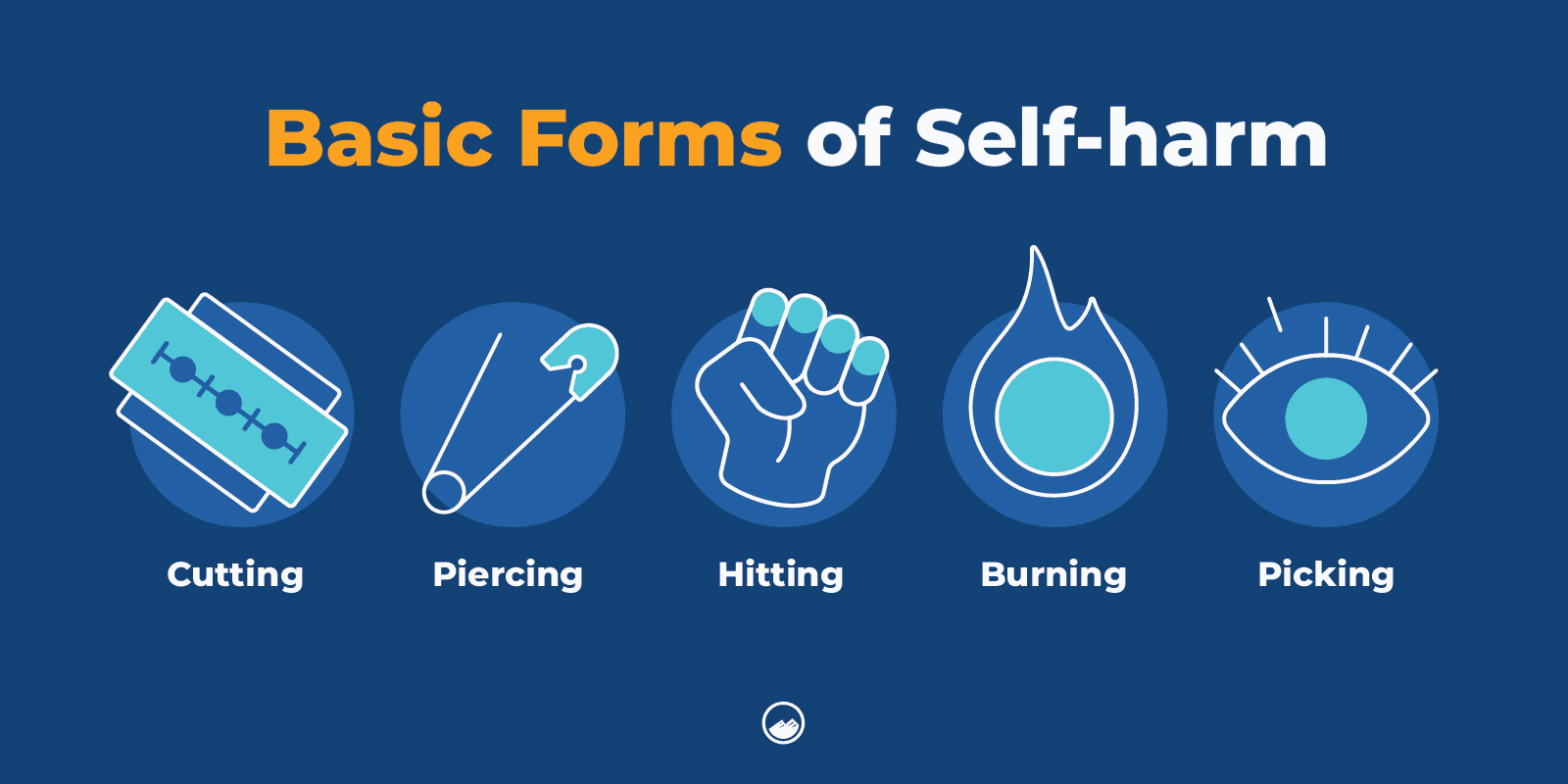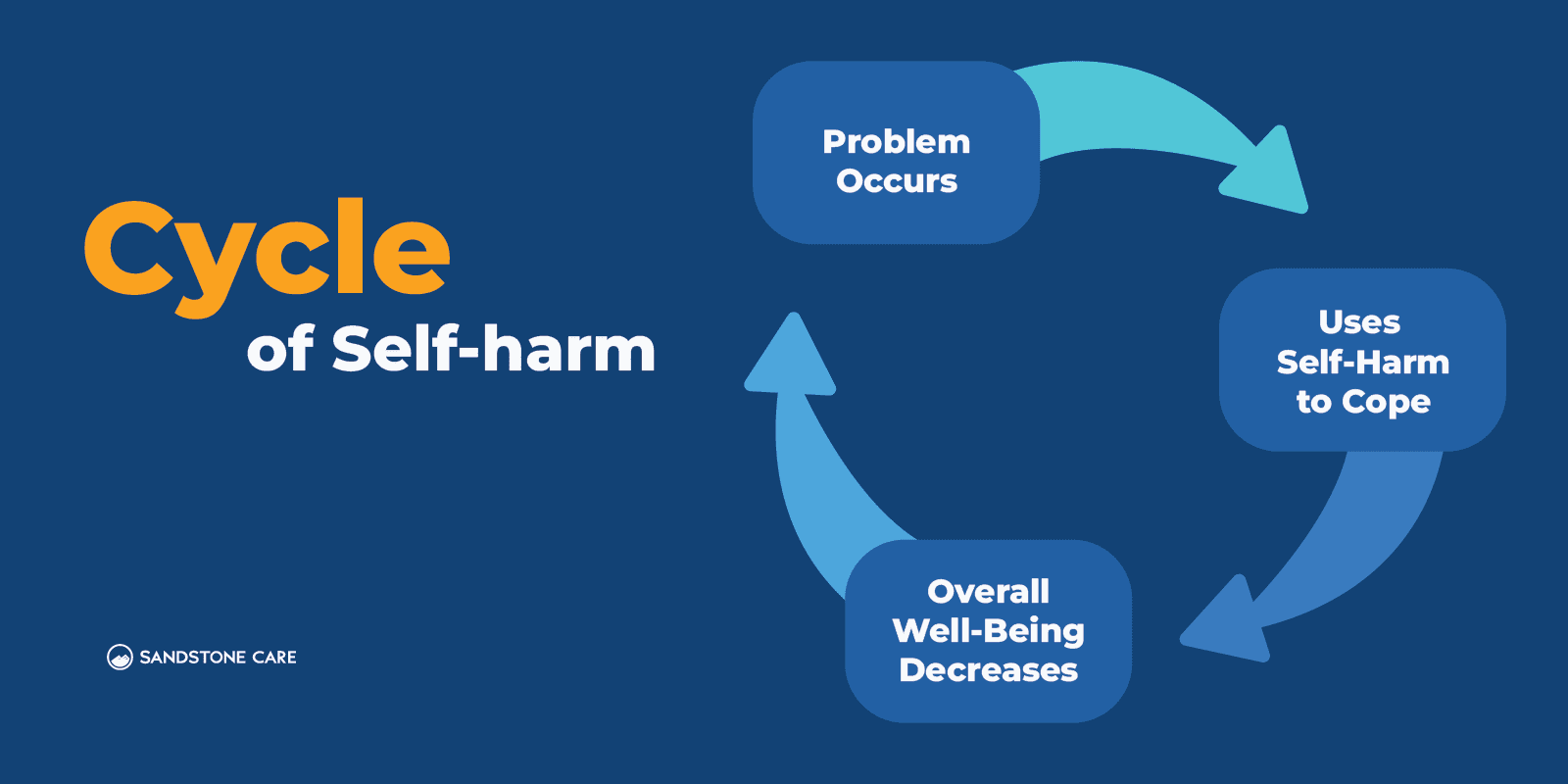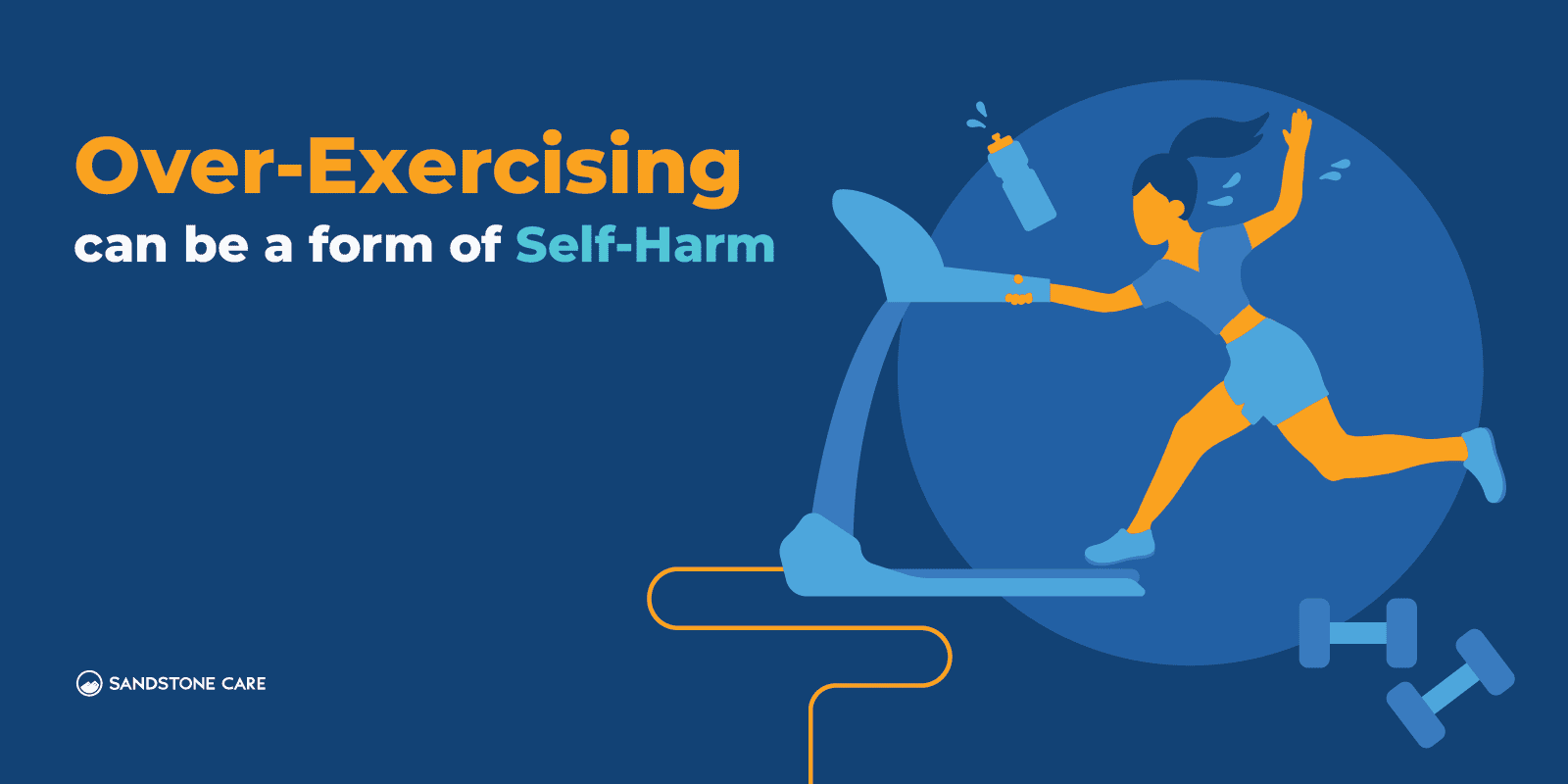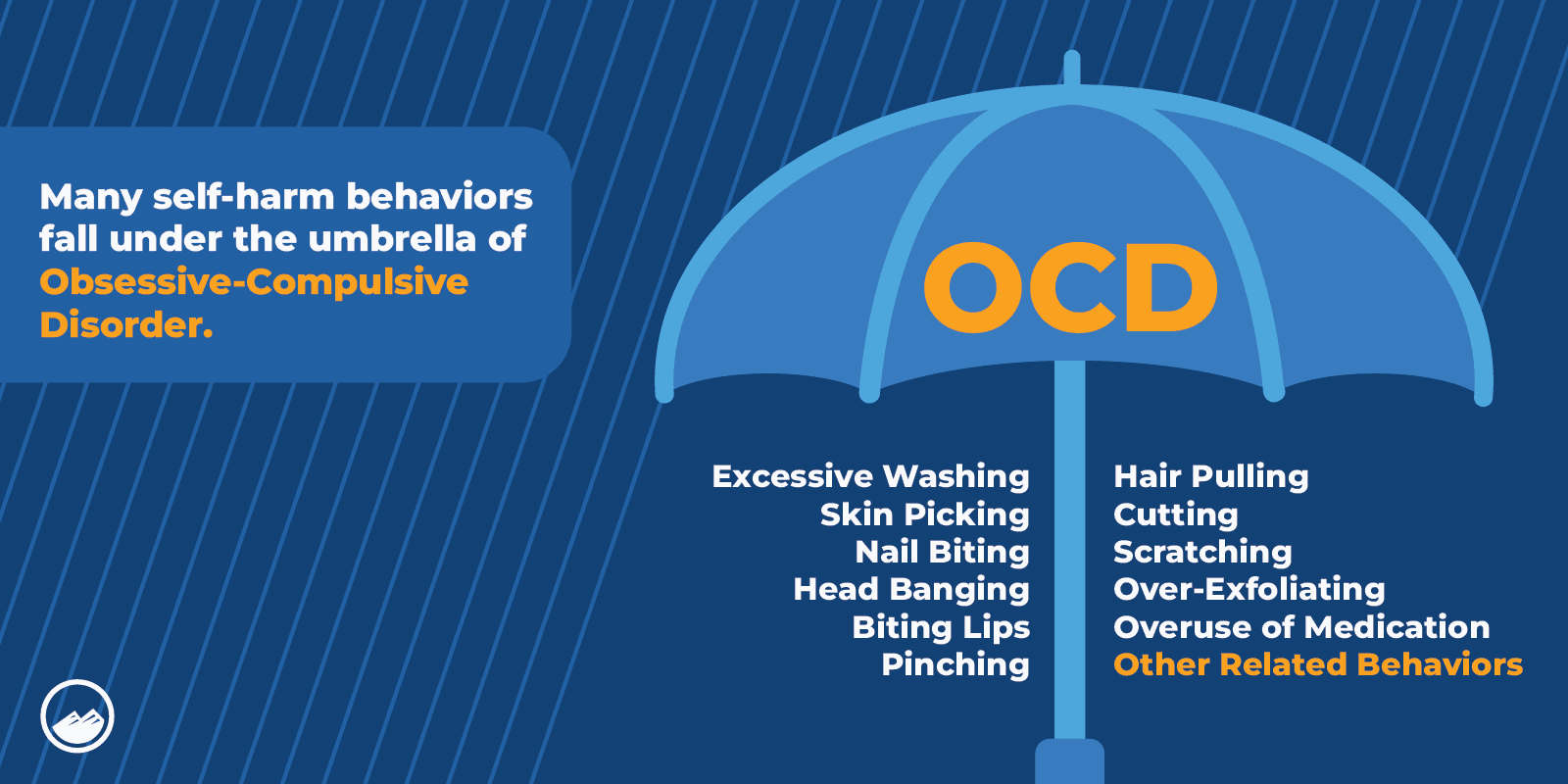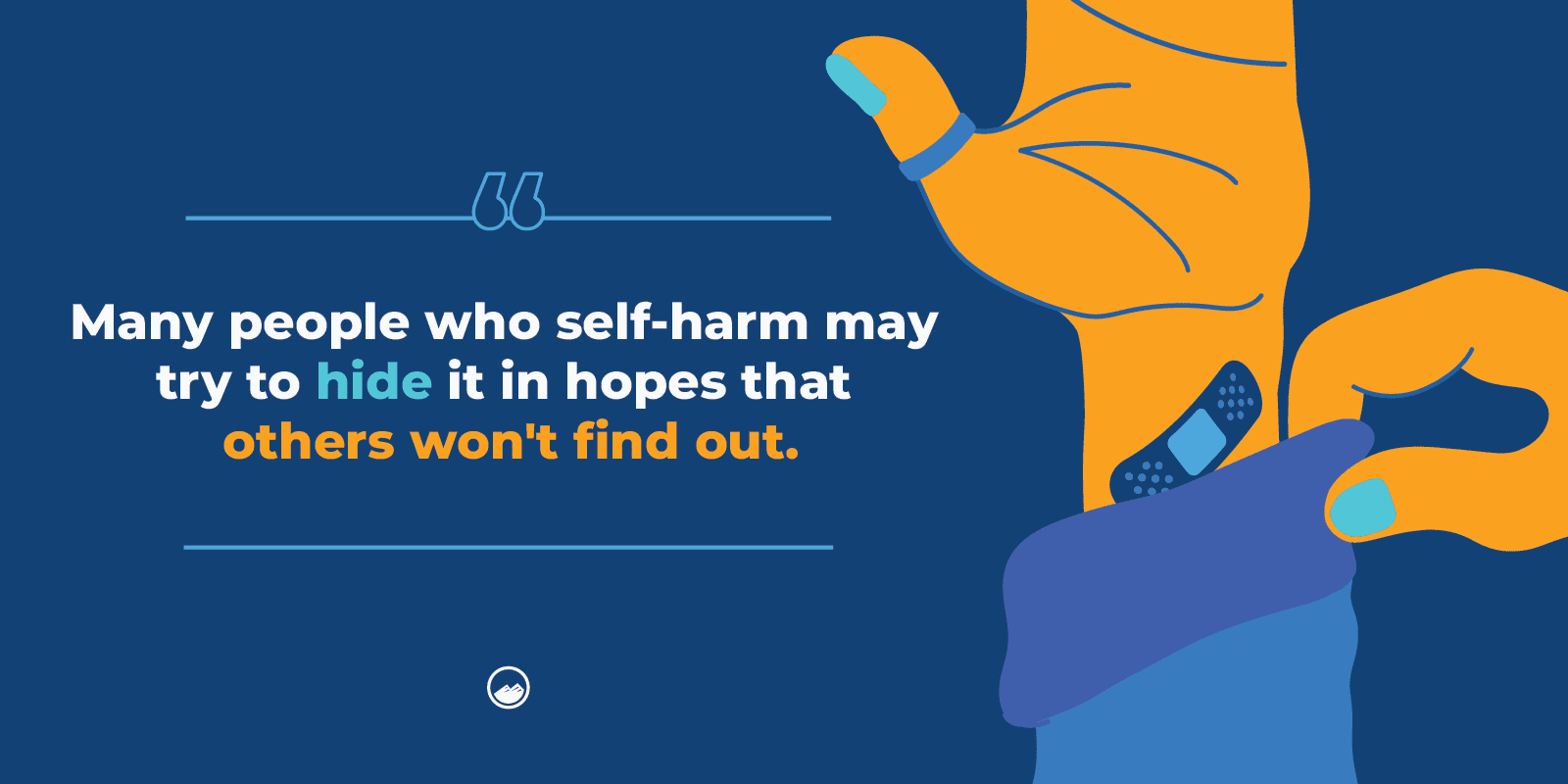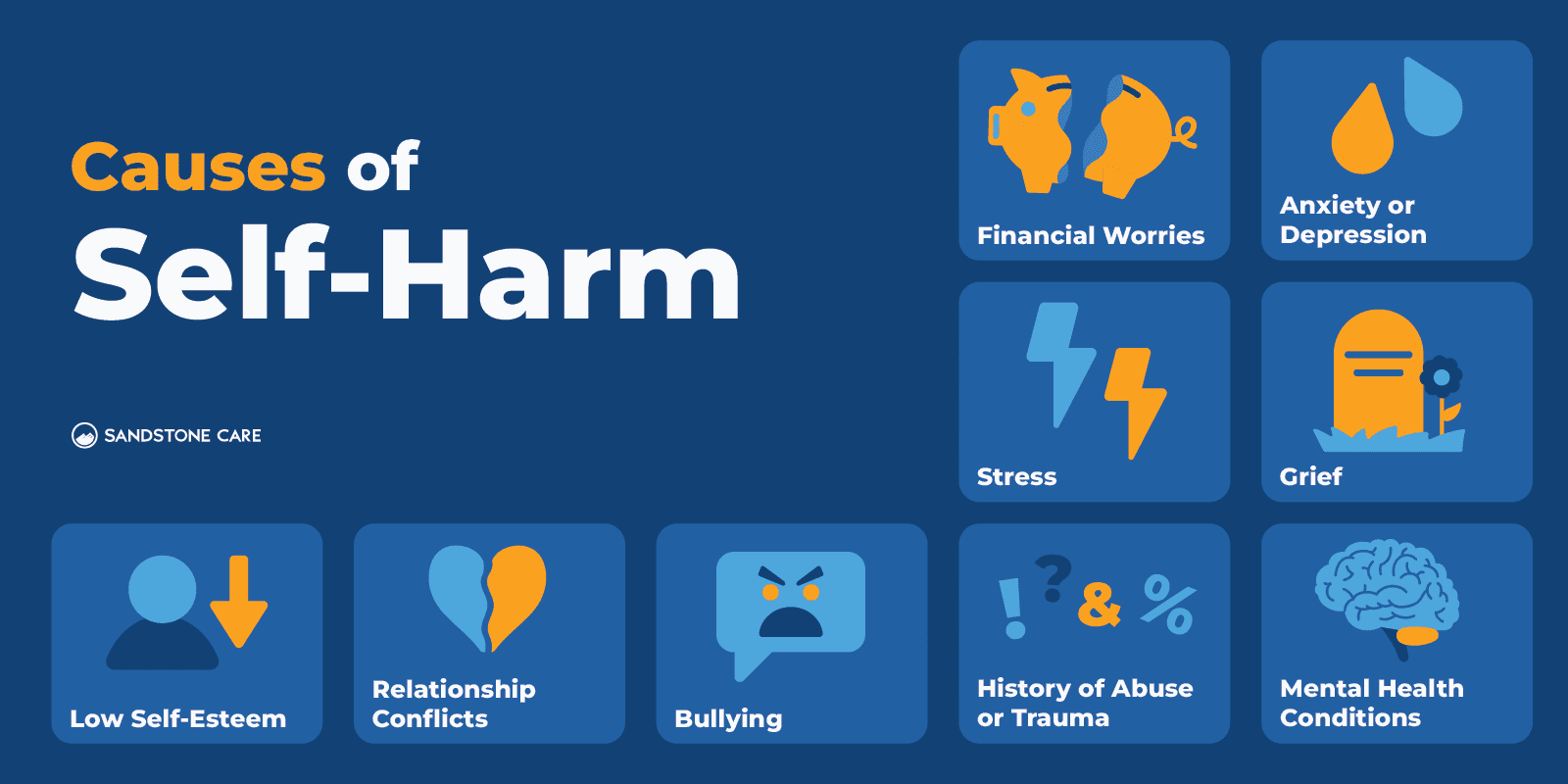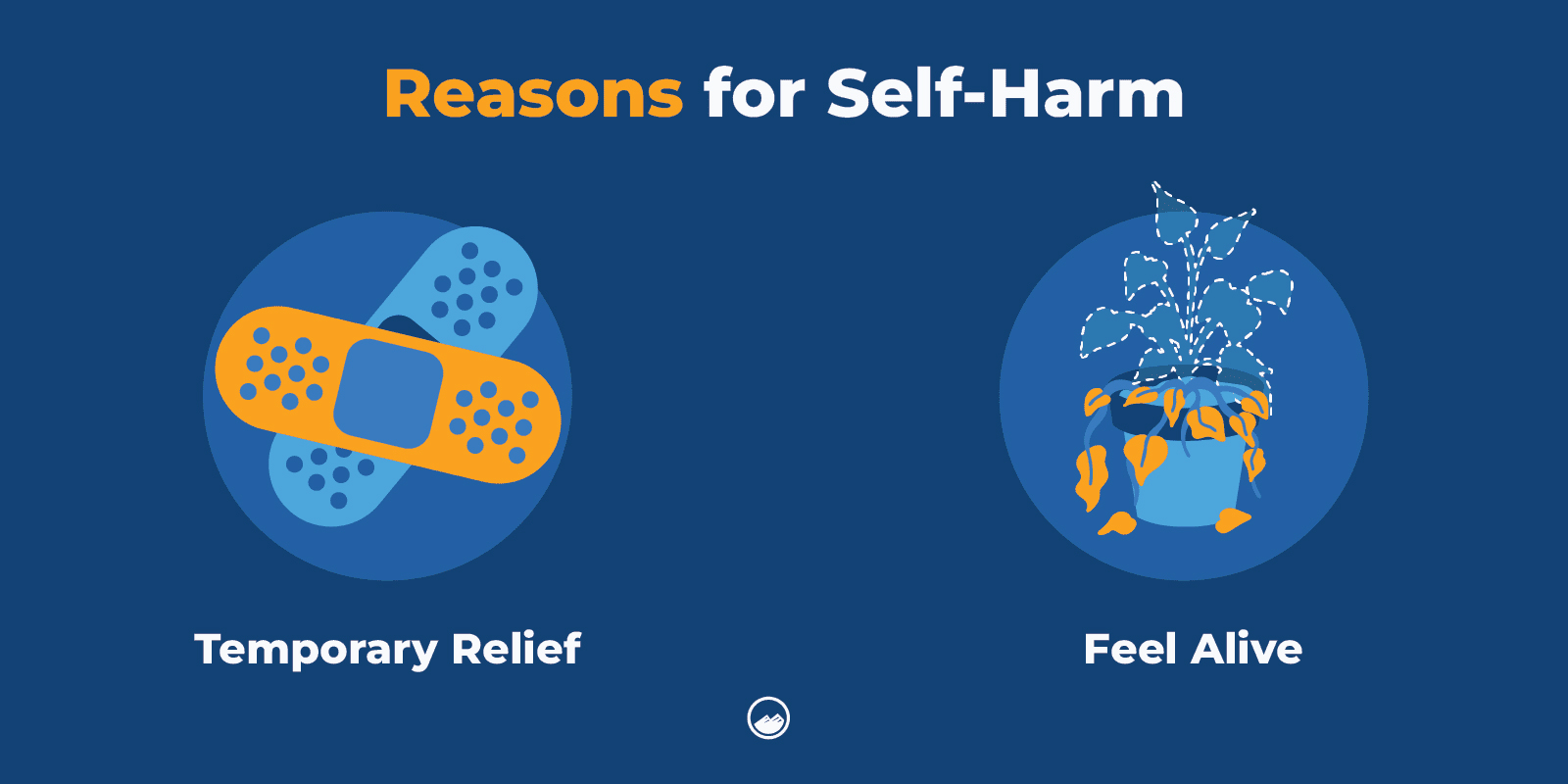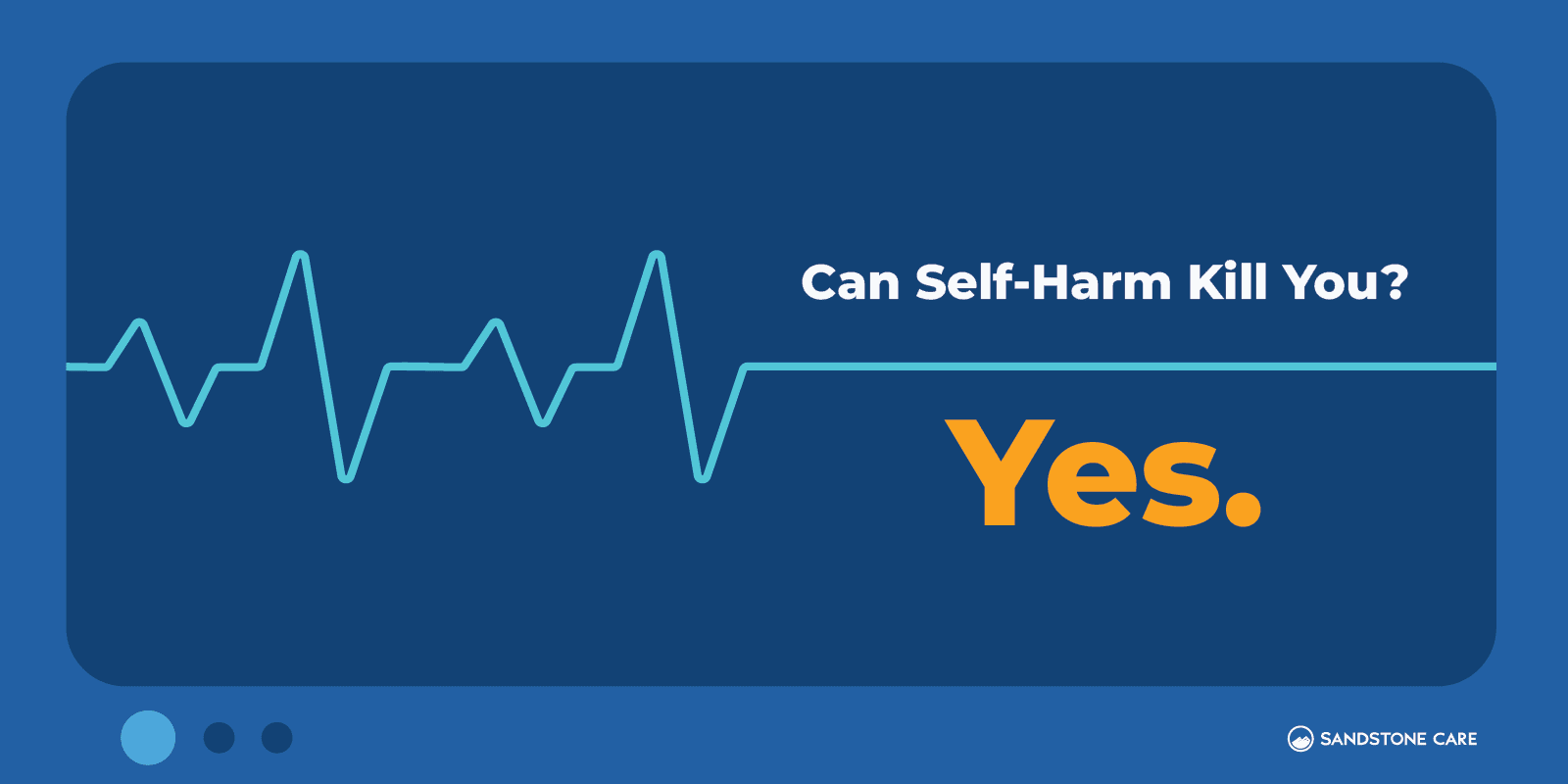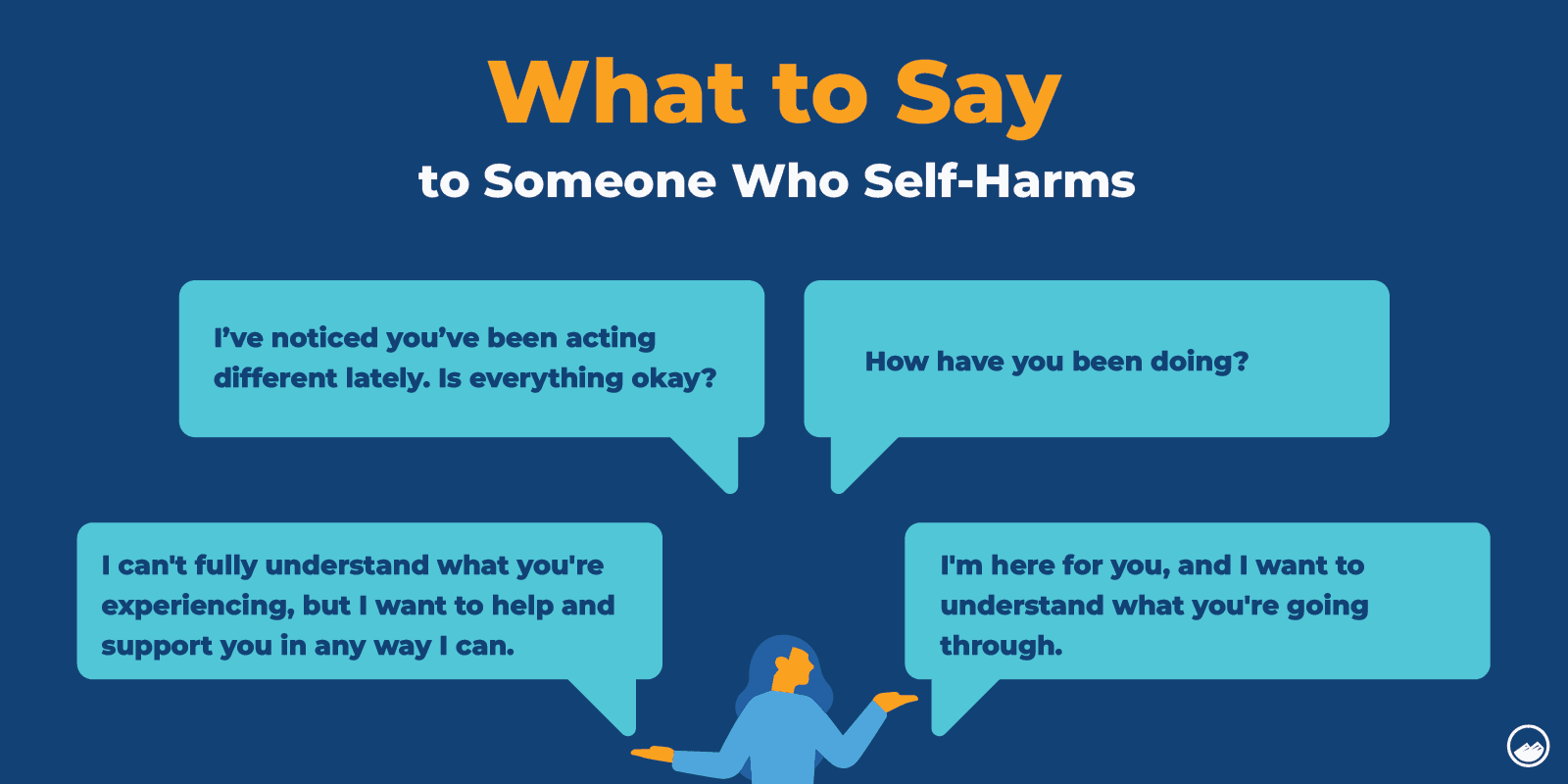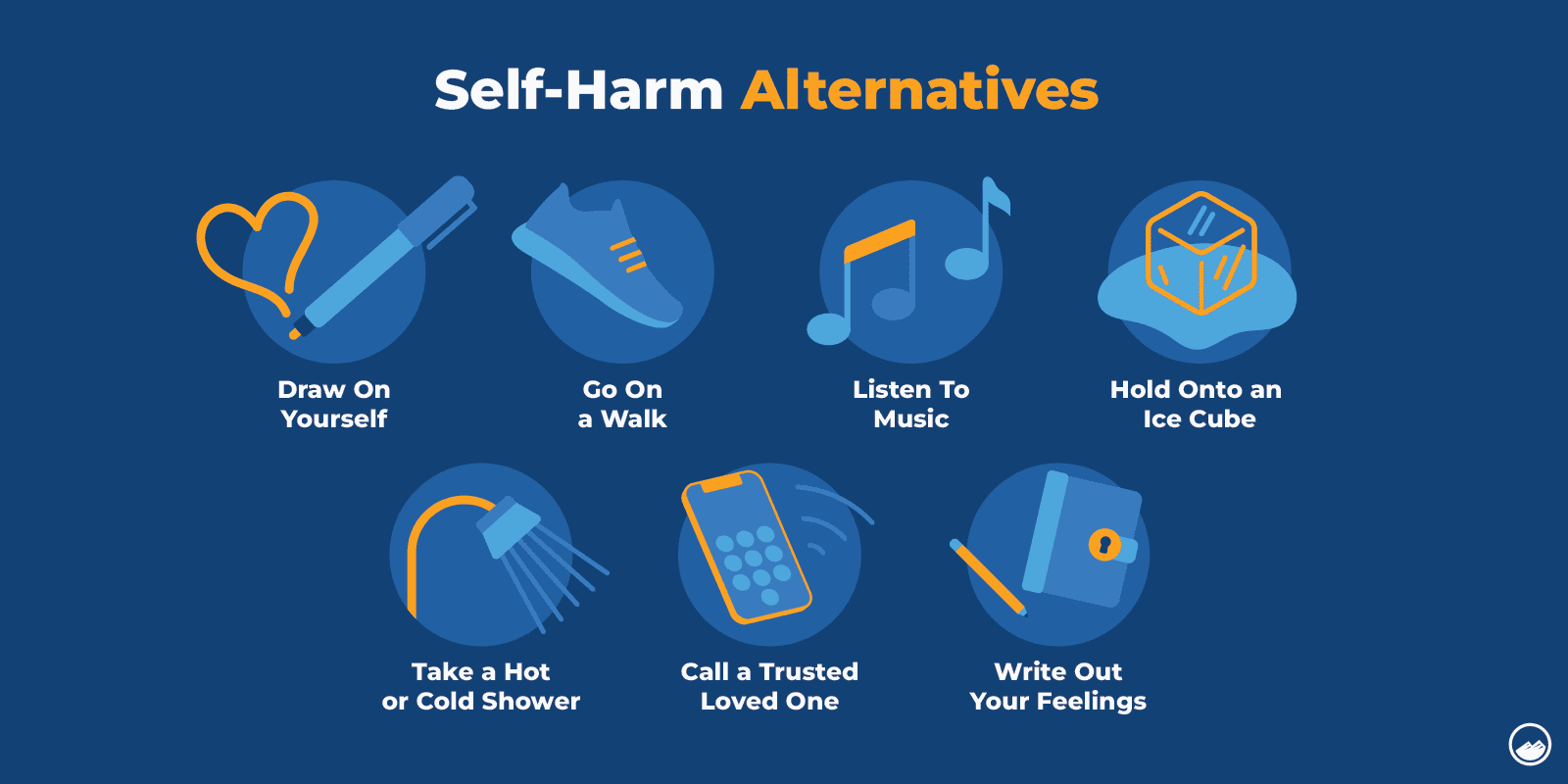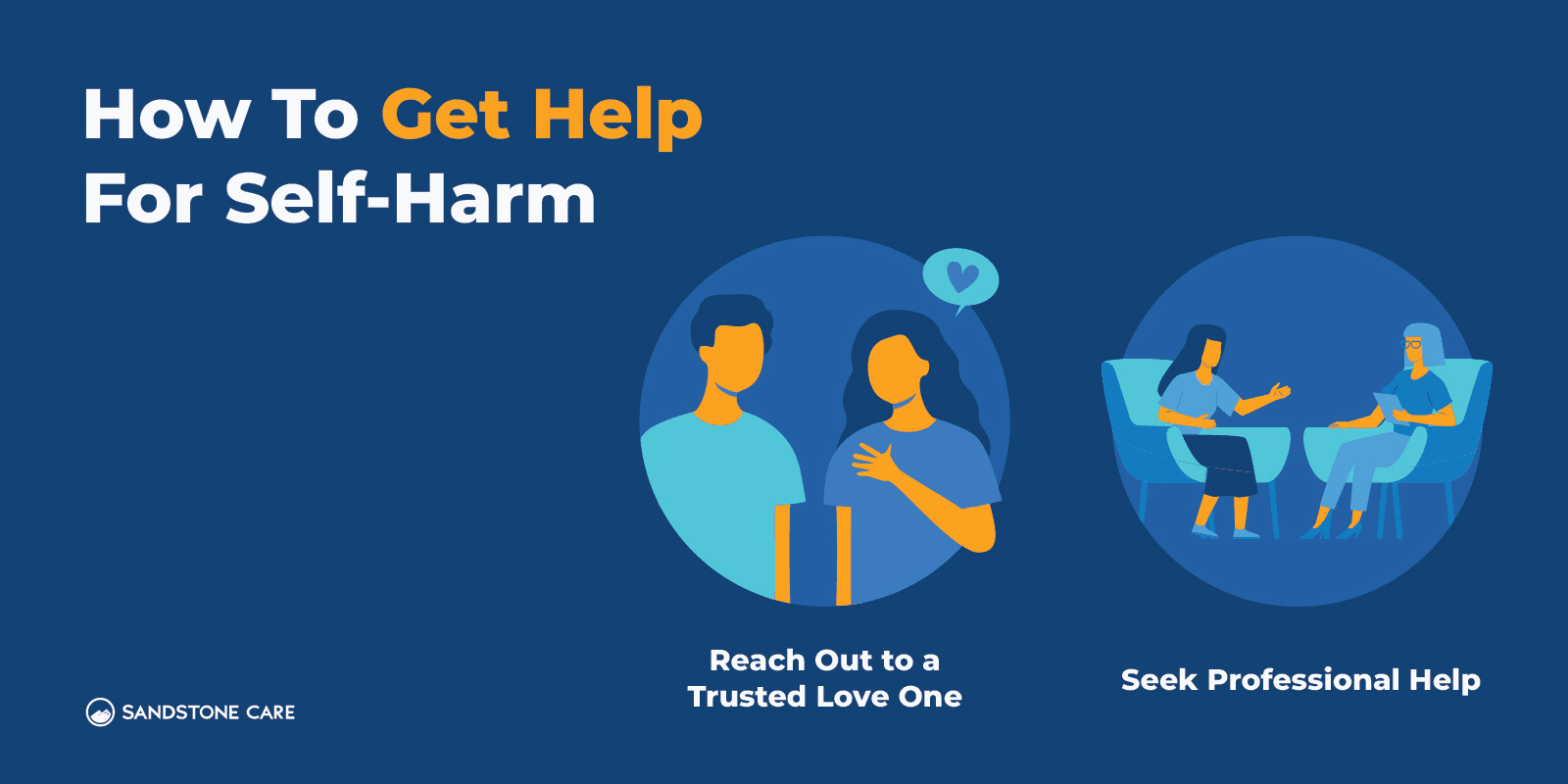What is self-harm?
Self-harm is defined as the act of someone hurting themselves intentionally (on purpose).
Most people who self-harm aren’t attempting suicide. Self-harm can be a way to express or control distressing thoughts or feelings.
Self-harm can cause more damage to your health and safety than you may have intended.
What signs suggest someone may be self-harming?
Self-harm may go unnoticed by others. Many people who self-harm do so in private and may not seek help.
Self-harm may include behaviours such as:
- cutting, burning or hitting yourself
- participating in risky behaviour
- abuse of drugs or alcohol
Signs that someone may be self-harming can include:
- changes in mood
- being secretive
- avoiding situations where you have to expose your arms or legs
- strange excuses for injuries
- withdrawing from usual activities
Why might someone self-harm?
There are many reasons people self-harm, and the reason for each person is different.
Self-harm behaviour may be a way for someone to manage distress or painful feelings. It may give short-term relief from these feelings.
Some people who self-harm may only do so once, whereas others self-harm frequently and for many years.
For most people, the feeling of relief after self-harming is only short term. This can result in a desire to self-harm again. Self-harming behaviour can occur in anyone at any age, including young people.
Reasons for self-harming may include:
- dealing with distressing feelings and memories
- communicating the need for support
- as an outward sign of inner pain
- self-punishment for feelings of guilt or shame
- loneliness
Triggers for self-harm may include:
- bullying
- school or work problems
- relationship problems
- low self-esteem
People living with mental health concerns or those who have experienced physical, emotional or sexual abuse are at increased risk of self-harming.
How to get help if you or someone you care for self-harms
If you self-harm, it’s important to get help.
Try to find supportive people who:
- you feel comfortable with
- you can talk to
- will listen without judgement
If you have a friend or a family member you can trust, reach out to them to help you.
Healthcare professionals who can help include your doctor, as well as:
- counsellors
- psychologists
Seeking help early can reduce the damage caused by self-harm and decrease your risk of self-harming in the future.
How can I support someone that I care about who is self-harming?
If you think someone you care for is self-harming, it is important that you:
- offer support
- encourage them to get professional help
Continue the conversation about their mental health by checking in with them to see how they are going.
If you are concerned for someone’s welfare and want to tell a healthcare professional, it’s important to tell the person first. Reassure them that:
- you have their best interests in mind
- you care about them
- your intentions are to help keep them safe
While it’s important to be there for the person that you care about, it’s a lot to manage on your own. Consider if you need to get support or advice from a healthcare professional or helpline.
How is self-harm treated?
There are different approaches to treating self-harm. Your doctor, counsellor or psychologist will work with you to develop a treatment plan.
Psychological therapies can help you understand why you self-harm. They can also give you tools and techniques to help you cope with any challenging thoughts and feelings.
Psychological therapies for self-harm may include:
- cognitive behaviour therapy
- dialectical behavioural therapy
- mindfulness
- problem solving therapy
What techniques can be used as distractions from self-harming?
Techniques that work as alternatives and distractions from self-harm can help relieve distress in the short-term. But remember, it’s important to seek medical help to stop self-harming behaviours.
Examples of alternatives to self-harm that can relieve distress in the short term include the following.
- Distract yourself by doing an activity that you enjoy such as reading, art, journaling, listening to music or going for a walk.
- Divert to an activity that will not cause injuries, such as holding ice cubes in your hands, wearing a rubber band on your wrist and snapping it when you feel you need to, or punching a pillow.
- Doing some deep breathing and relaxation exercises.
You may want to copy your list of alternative activities onto a piece of paper or into your phone. This way you have it when you need it.
Complications of self-harming behaviour
Self-harming behaviour can have very serious complications, such as an increased risk of serious physical harm or accidental suicide. These complications can occur when you cause more damage than intended.
People who repeatedly self-harm may become suicidal or feel hopeless.


